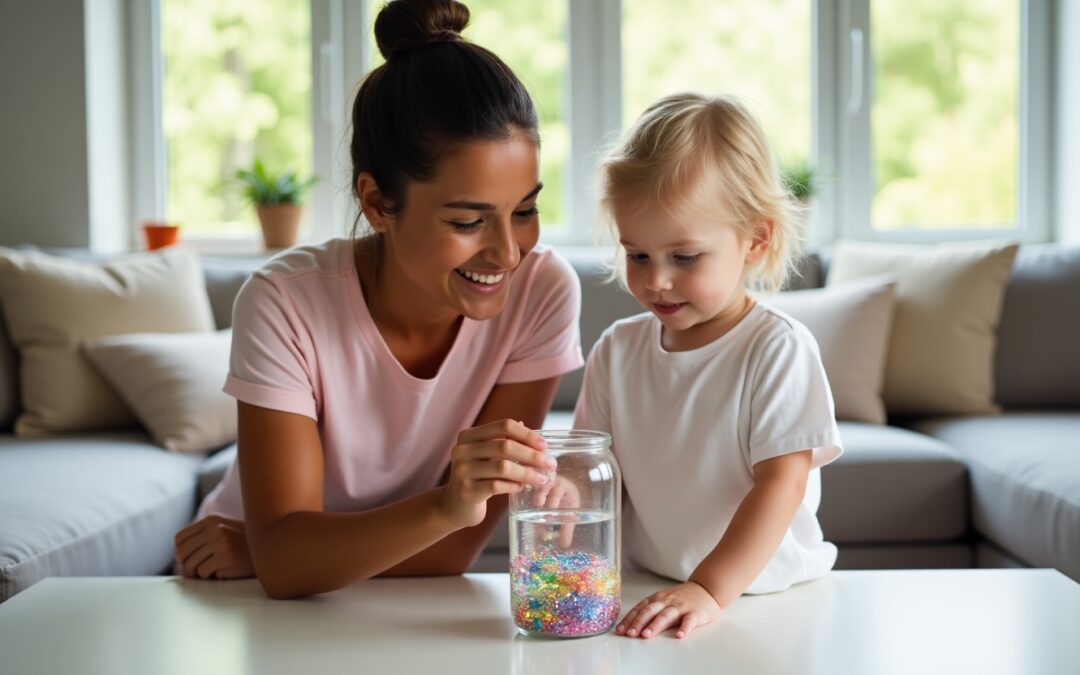Every parent and nanny knows the moment when a calm afternoon turns into tears, frustration, or a full-blown meltdown. Whether it’s a toddler upset about snack time or a school-aged child overwhelmed by homework, these moments can feel chaotic. But here’s the thing: big emotions are a normal and essential part of growing up.
The key to raising emotionally healthy kids isn’t avoiding these moments. It’s helping children understand, express, and manage their feelings in healthy ways. Learning emotional regulation takes time and patience. Helping children regulate emotions doesn’t have to feel impossible. The most effective progress happens when caregivers and parents work together with consistency and empathy.
1) Why Emotional Regulation Matters
Emotional regulation is a foundational skill that helps children manage impulses, handle stress, and build resilience. Research from the Center on the Developing Child at Harvard University highlights that early emotional support helps shape lifelong mental health, problem-solving abilities, and relationships.
When adults respond to children’s emotions with calmness and understanding, kids learn that feelings are not something to fear or suppress. They’re something to navigate and express safely.
2) Understanding the Root of Big Emotions
Before jumping to solutions, it helps to understand why children react so strongly. Common triggers include:
- Developmental limitations: Young children don’t yet have the words or tools to express complex feelings.
- Overstimulation or fatigue: A tired or hungry child’s tolerance for frustration plummets.
- Transitions and change: Even small disruptions in routine can feel overwhelming.
- Seeking connection: Sometimes, big emotions are a child’s way of saying, “I need you.”
Recognizing what’s underneath the reaction allows caregivers to respond with compassion rather than frustration.
3) Techniques for Helping Children Regulate Emotions
a) Stay Calm and Co-Regulate
Children borrow our calm. When caregivers stay composed during outbursts, they model emotional control and create a sense of safety. Lower your voice, get to the child’s level, and use simple phrases like: “I can see you’re upset. Let’s take a deep breath together.”
Over time, this teaches children how to self-soothe by first learning through co-regulation.
b) Name the Feeling
Labeling emotions helps children make sense of their internal world. Try: “It looks like you’re frustrated because the block tower fell.” or “You’re sad because playtime ended.”
According to child development experts at the Yale Center for Emotional Intelligence, naming emotions reduces their intensity and builds self-awareness.
c) Offer Choices, Not Control
Giving children small choices helps them feel empowered when emotions are high. For example: “Would you like to sit on the couch or in your room while you calm down?” or “Do you want to talk now or after your snack?”
These choices shift focus from power struggles to cooperation.
d) Practice Mindfulness and Breathing Techniques
Even very young children can learn simple mindfulness practices:
- “Smell the flower, blow the candle” – Inhale deeply (smell the flower), exhale slowly (blow the candle).
- Calm jars – Watching glitter settle in water helps children visualize calming down.
- Body scans – Encourage older kids to notice where they feel tension and relax those areas.
Studies show that mindfulness activities improve children’s focus, emotion regulation, and stress response.
e) Use Visual Aids and Emotion Tools
Visual tools like emotion charts or feeling faces help children identify what they’re experiencing. A “calm-down corner” stocked with soft toys, coloring materials, or sensory bottles gives them a safe space to regroup.
Nannies can create portable “calm kits” for outings, while parents can maintain one at home for consistency.
4) Working Together: How Nannies and Parents Can Stay Consistent
Children thrive when their caregivers respond to emotions in similar ways. A few collaboration tips:
- Share strategies – Discuss what works best during tantrums or transitions.
- Communicate daily – A quick note or message about emotional wins or challenges helps maintain alignment.
- Reinforce routines – Consistent bedtime, meal, and play routines reduce emotional overwhelm.
When adults model understanding, patience, and empathy, children internalize those same qualities, and that’s what builds lasting emotional resilience.
5) Age-by-Age Guidance for Emotional Regulation
- Toddlers (1–3 years): Focus on co-regulation, naming emotions, and offering comfort. Use short, clear sentences and physical reassurance.
- Preschoolers (3–5 years): Introduce emotion vocabulary and calming tools like breathing or sensory play.
- School-age children (6–10 years): Encourage problem-solving and reflection (“What could we do differently next time?”).
- Tweens and teens: Normalize emotional ups and downs and keep communication open. Validate feelings without judgment.
Helping children regulate emotions isn’t about avoiding tears or frustration. It’s about building connection through empathy, patience, and understanding. Every time you help a child identify and navigate a big feeling, you’re wiring their brain for resilience, compassion, and confidence.
When nannies and parents partner in teaching emotional awareness, children feel secure, understood, and capable of managing life’s challenges, one big emotion at a time.


Recent Comments